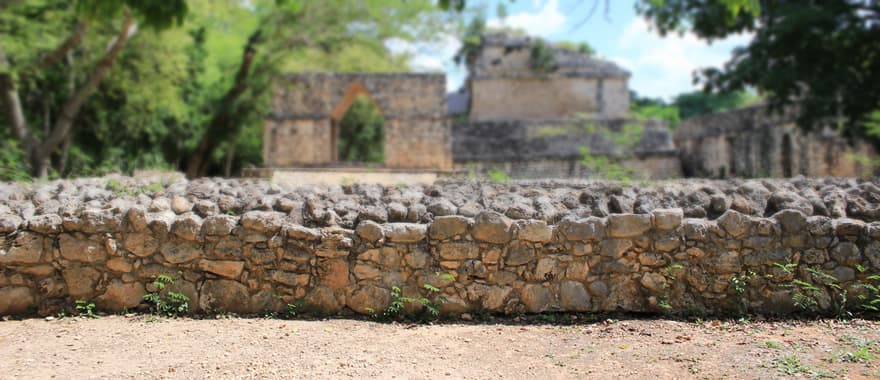Each of the 3 walls is 3 meters wide and must have been 1.5 meters high. Its walls originally covered with stucco and painted.
The walls are not common in the pre-Hispanic sites of Yucatan; There are, however, examples of them in Uxmal, Chichen Itzá, Mayapán, Aké, Chun-chucmil, Cucá, Muna, Chacchob and Dzonot Aké. The size of the walled spaces varies a lot and also the number of structures they enclose, but almost all of them are of little thickness and low. In some parts they are just simple stone alignments, which do not appear to have been effective in defending the site or preventing the passage of intruders.
However, the defense aspect of the walls can hardly be excluded, since the warlike character of the Mayans is known, both from written sources and from the representations of warriors and battles in paintings and sculptures.
In places like Tulum, in Quintana Roo, and Becán in Campeche, the walls are 3 to 4 meters high and 6 to 10 meters thick and are true fortifications. In the case of Ek Balam, it is likely that they had the meaning of symbolically prohibiting the passage of certain parts of the site, in order to maintain its sacred and exclusive character.
